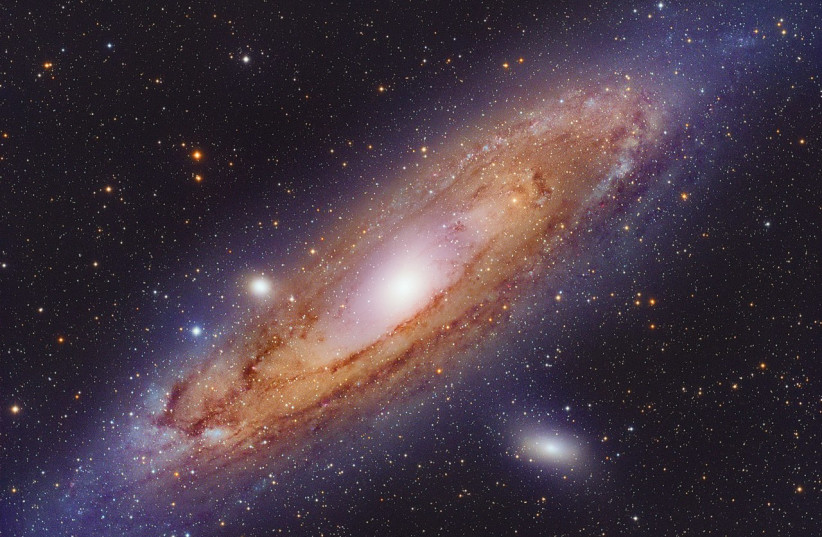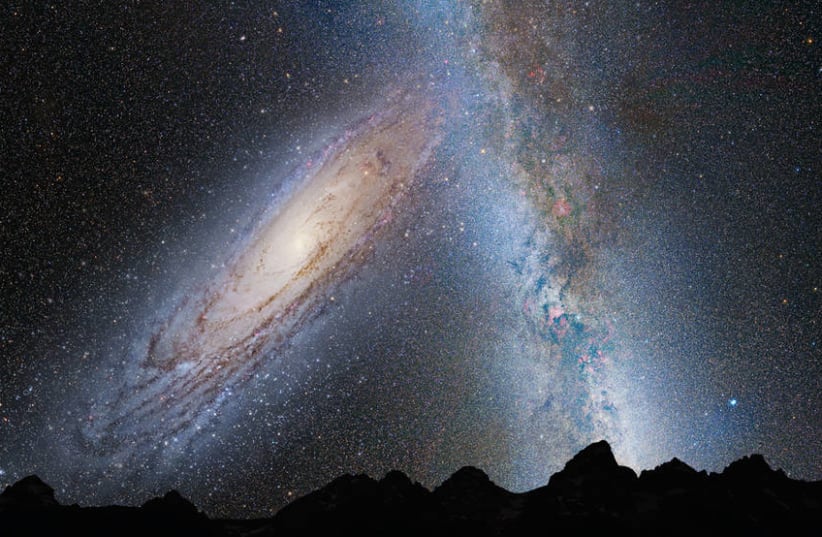NASA's James Webb Space Telescope has made a monumental discovery in the form of six mysterious galaxies that, based on our understanding of cosmological theory, shouldn't be able to exist, according to a new study.
The findings of this study, carried out by an international team of researchers, were published in the peer-reviewed academic journal Nature on Wednesday.
This discovery could completely upend our understanding of space, with the paper's co-author describing the entire situation as "bananas."
Cosmological theory: Why can't these galaxies exist?
The Big Bang is widely held up by scientists as being the birth of the universe, with matter exploding outward, causing the eventual formation of literally everything.
This, too, included the formation of galaxies – the large stellar structures filled with stars and planets all held together by gravity.

Exactly how and when galaxies formed has always been a matter of debate, though some studies have indicated it could have begun as much as 200 million years after the Big Bang itself. This may be the case with the Milky Way Galaxy, where Earth and by extension all of us are located. According to NASA, the Milky Way is 13.6 billion years old while the universe itself is 13.8 billion years old.
Over time, stellar matter and smaller galaxies would merge together or gather via accretion in order to form larger galaxies. This, too, happened with the Milky Way, which had grown over the course of billions of years. In particular, it is believed by scientists that in the past, the Milky Way had merged with several other galaxies, including the Sausage Galaxy and the still theorized Kraken Galaxy, both of which happened within the last 11 billion years.
In other words, this means that while the Milky Way Galaxy is old, it wasn't nearly this big for all 13.6 billion years of its existence. This growth took billions of years of accretion and merger in order to get as big as it is today.
And this is what makes these six newly discovered galaxies impossible – because they would have been way too big way too early.
How do scientists know any of this?
NASA's James Webb Space Telescope is currently the most advanced space telescope around, with cutting edge technology and advanced tools to let it see farther into the universe and see in much greater detail than ever before.
In particular, among its capabilities is the ability to – technically speaking – see through time.
Time and distance have an interesting relationship. This is because visual images and signals need to actually travel in order to be seen.

For example, the Sun is on average 150 million kilometers away from the Earth. Now, one might think that all sunlight that reaches Earth does so instantaneously, but that actually isn't true. Light has a set speed it can travel (specifically 299,792,458 meters per second, assuming it is traveling in a vacuum without any interference). This is very fast, but it isn't instantaneous.
With this speed in mind, we know that it takes light from the Sun a little over eight minutes to reach Earth. That means when we look at the Sun, we aren't seeing a live image of what is actually happening on the Sun. We're actually seeing what was happening on the Sun around eight minutes prior.
Now take this idea and expand the scale so it applies across the universe. All stars emit light, which we can see. But the farther away the star is, the older what we're seeing is. If you're looking at a very distant star, you're actually seeing what happened a very long time ago.
It is with this principle that the James Webb Space Telescope can see back in time. It can see so far away that it ends up seeing distant stars and galaxies – not as they are now, but as they were back when that light was first emitted.
Now, lets talk about the galaxies in question.
The six potential galaxies spotted were estimated by the team to have existed around 500-700 million years after the Big Bang.
The fact that galaxies existed back then isn't the issue – the Milky Way is estimated to be older, after all, and scientists in 2022 found four galaxies that likely formed 350 million years after the big bang.
But these six galaxies are just enormous, significantly dwarfing these four other galaxies.
In particular, these six galaxies are estimated to have around the same amount of stars back then as the Milky Way does now.
Considering the Milky Way only amassed such a huge amount of stars after billions of years of mergers and accretion, it is baffling that there were galaxies so enormous not even 1 billion years after the Big Bang.
But maybe it wasn't through mergers or accretion. Maybe they just formed stars naturally. After all, that does happen. The Milky Way does it too – with around a star or two forming each year, on average.
But this also doesn't make sense, because if these six galaxies were forming new stars to grow to such a massive size, they would need to be spawning hundreds of new stars each year throughout the entire history of the universe itself.
That's no exaggeration, either. The Milky Way Galaxy is thought to have around 400 billion stars, and these six galaxies must have a similar amount. So yes, they really would need to be forming that many stars so often.
And even if they could do that, it still should be impossible because quite frankly, as far as our current scientific understanding of the universe is concerned, the amount of baryonic matter (normal matter, as opposed to dark matter) that existed in the universe at the time was nowhere near enough to fuel these galactic growths.
There simply wasn't enough matter to form six huge galaxies so fast.
"It's bananas."
Erica Nelson
"It's bananas," study co-author Erica Nelson said in a statement. "You just don't expect the early universe to be able to organize itself that quickly. These galaxies should not have had time to form."
Currently, more research is needed to better understand these galaxies – if they even are galaxies. That seems to be the case, but more research is needed to confirm that. There is always the possibility that they're wrong, and that perhaps some of them are either a calculation error or a concealed supermassive black hole.
But if even one of them is real, it means we may be profoundly wrong about some basic details about the universe.
And it also has implications for research going forward, too. Currently, computer simulation models of the universe often hinge on details like stellar mass, meaning the total mass of stars in galaxies. But if massive galaxies like this existed so long ago, we may need to reevaluate how we've been programming these models, which have a significant impact on how we understand space.
But ultimately, this is also just one of the many amazing discoveries the James Webb Space Telescope has helped make, helping us learn more about the universe with every new revelation.
